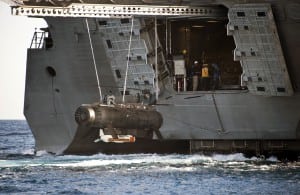
After reviewing the recommendations of the independent team charged with assessing the Remote Minehunting System (RMS) program, the Navy has decided not to move forward with a second round of low rate initial production, essentially keeping the fate of a key asset in the Littoral Combat Ship’s (LCS) mine countermeasures mission package in limbo, sources involved with the program told Defense Daily.Instead, the Navy’s preferred path forward is for RMS manufacturer Lockheed Martin [LMT] to upgrade its existing systems in…













